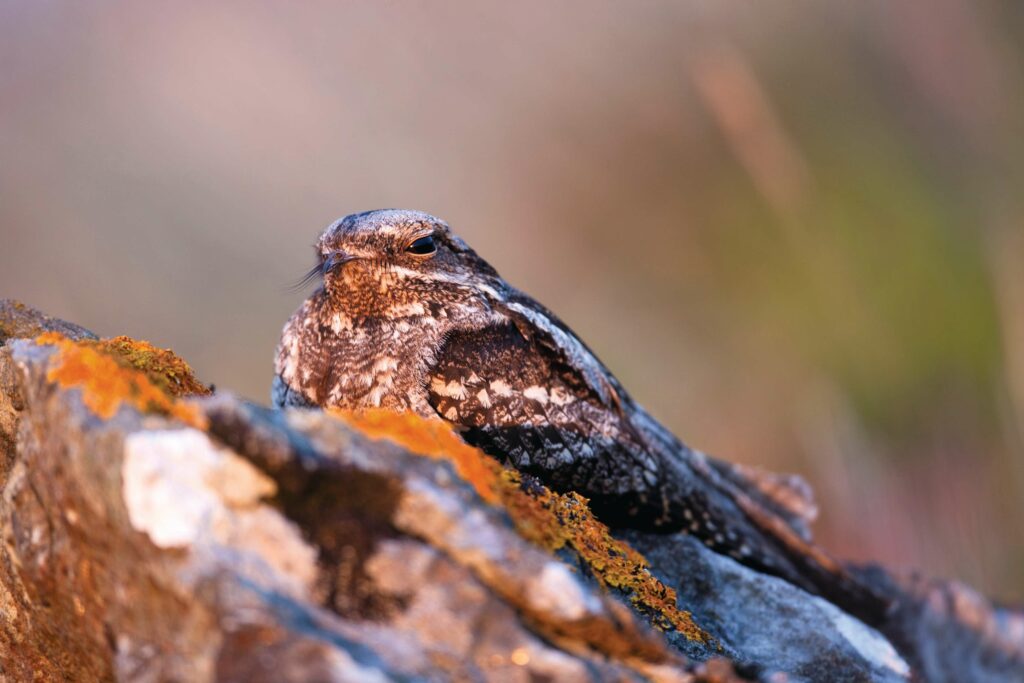Listen out for the strange calls of the male nightjar

JUNE IS A GREAT MONTH TO HEAR THE nightjar’s mesmerising night-time song, known as churring. The male bird begins his performance not long after sunset. It is curiously like an insect or machine: a rapid, highpitched trill sustained for several minutes, with a pitch that rises or falls as the perched singer turns his head. On still evenings, the sound carries far across heaths, brackencovered hillsides and forest clearings.
Nightjars are summer migrants that visit Britain between the end of April and August. They are aerial insect feeders, rather like huge brown nocturnal swallows, and large moths make up over 60 per cent of their diet. GPS studies of tagged birds in Norfolk’s Thetford Forest by the British Trust for Ornithology (BTO) suggest they hunt mainly at the beginning and end of the night, avoiding the darkest middle part, which might be spent near the nest.

Living World
Chris Sperring is in Somerset listening for nightjars